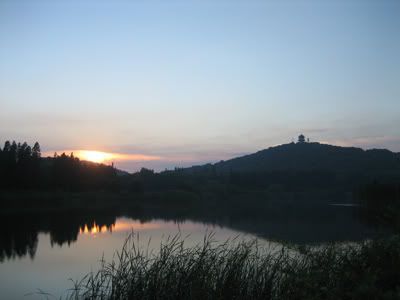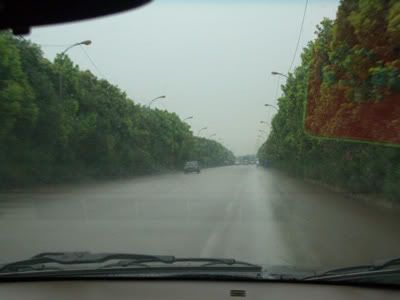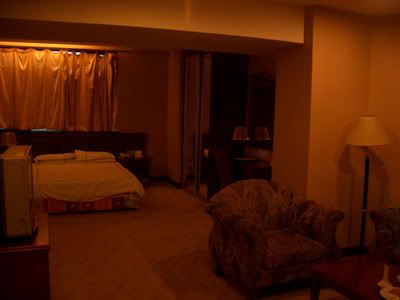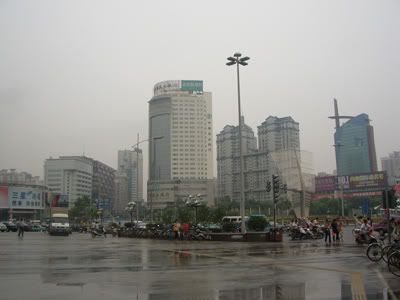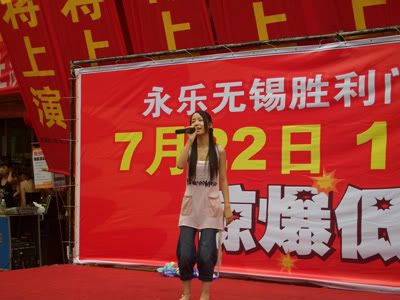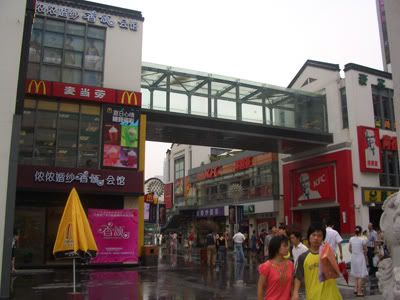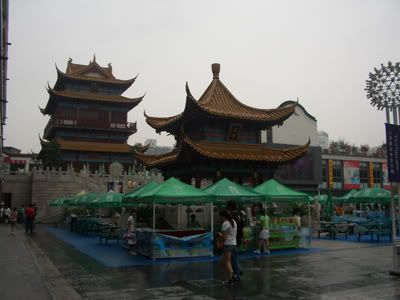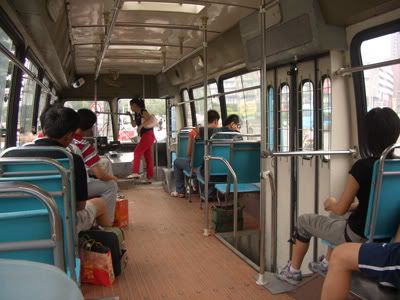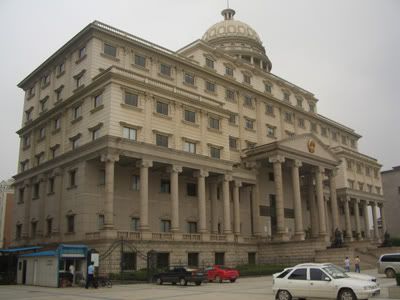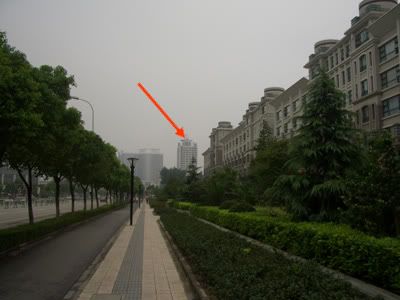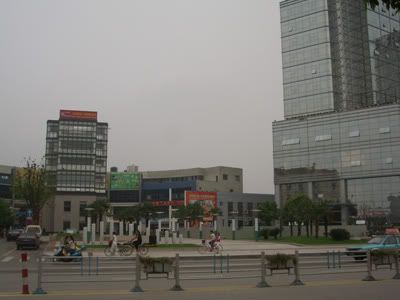The plan for the Saturday (29th July) is to visit Ling Shan follow by Tai Hu.
Journey to Ling Shan
We took a cab to Wuxi bus station from our hotel. While walking from the taxi alighting point to the bus station, we were approached by many travel agents who were promoting their Ling Shan package tour. We ignored all of them until we got to the entrance of the public bus area. The package offered by one of the agent is quite acceptable so we went for it.
We hop on the tour bus and off we go to Ling Shan. There is a travel guide on the bus who gave us a good introduction to the story of Ling Shan. It cost 88 RMB for the entrance tickets (which is inclusive of the tour guide services) plus another 3 RMB for the bus cost. The original entrance cost price is 68 RMB. So an additional 20 RMB for a 1 hour reduced journey plus introduction to Ling Shan is quite a good package.
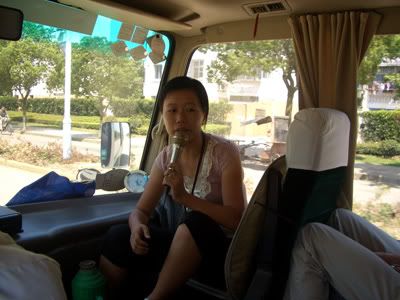
Along the way there, we noticed a large number of stalls setup by the expressway selling peaches.
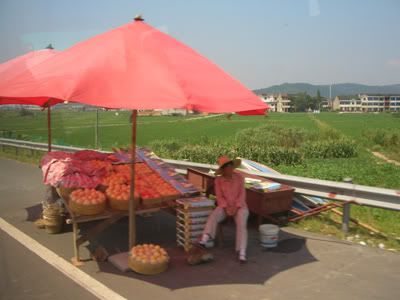
As we got closer to Ling Shan, the tall Buddha structure can be seen at a distance. Can you see the Buddha below?

After an hour's ride, we arrived at Ling Shan. A massive entrance greeted us with the large Buddha looming behind. This is actually one of the 5 big Buddhas in China. It follows the scriptures' depictions of the 5 Buddhas in the 5 directions. Wuxi's big Buddha is in the East.
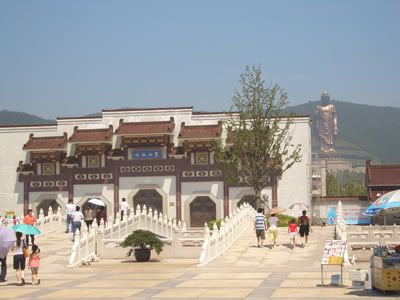
Past the entrance gates, there is a large imprint of the Buddha's footprint. Many of the visitors throw monies to it for blessings. The Buddha's toes are all equal in length, symbolising the Buddha's equanimity to all beings.
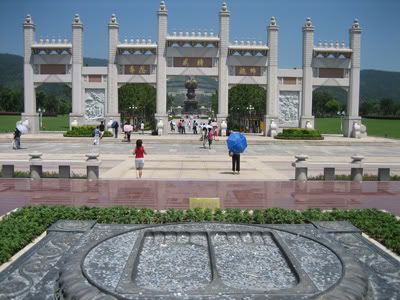
Thereafter we arrived at our of the main highlights of Ling Shan, the musical fountain which depicts the birth of Shakyamuni Buddha. It is said when the Buddha was borned, 9 dragons appeared from the sky and celebrated the moment with a large display of grandeur.
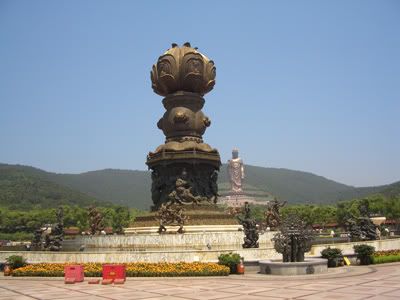
There are 4 shows daily with 2 in the mornings and 2 in the afternoon. We catched the one at 11.30am. The introduction given is remarkable and touching. It indeed reflect the great respect fellow Buddhist have to the great teacher - Shakyamuni Buddha. I have captured two of the musical fountains videos and they can be viewed below. At the end of the display, visitors can fill their bottle up with one of the many fountains. It is said the water here are purified using advanced German filtration technology.
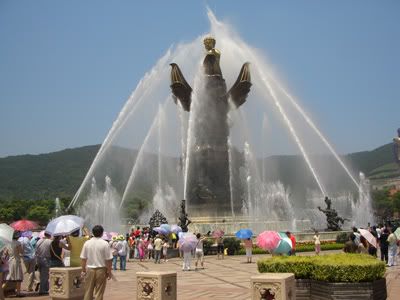
After the musical fountain, we proceeded upwards to a place where a large mural of the Buddha and bronze boys and girls are shown. There are many white pigeons walking around.
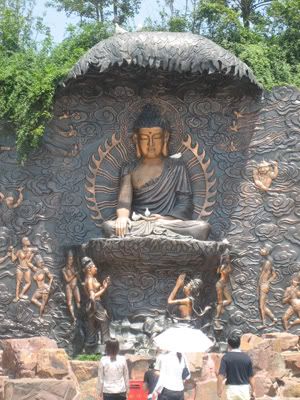
Past the mural is an Asokan pillar. At the top are 4 lions in 4 directions. The great lion roar of buddhism in all directions, where the truth will prevail for all. According to the tour guide, several weeks were spent in the transportation of the Asokan pillar.

Behind the Asokan pillar are the Buddhist multi-color flags and Chinese flags. It clearly show the close relationships between Buddhism and China. Buddhism has been in China for 2000 years and has contributed greatly to the history and culture of China.
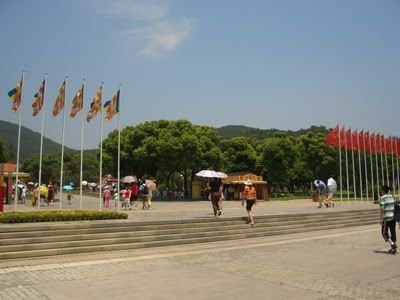
The Buddha's hand with a Dharma wheel in the middle is actually a popular souvenir from Ling Shan. Many people can be seen queuing up for a photo shot with this massive Buddha hand. We also joined in the queue for a 'high five' minus the photos.
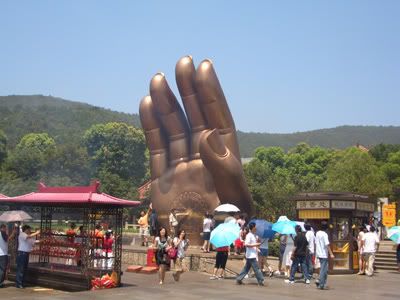
We are finally approaching the large Buddha. But first we have to visit the 'Hall of Great Courage'. This hall is present in all Chinese temples which contain the images of Shakyamuni Buddha and its disciples.

Past the hall is the steps to the large Buddha. There are 218 steps in all. It is summer time and the sun is scorching hot, so we made our way through the steps rapidly.
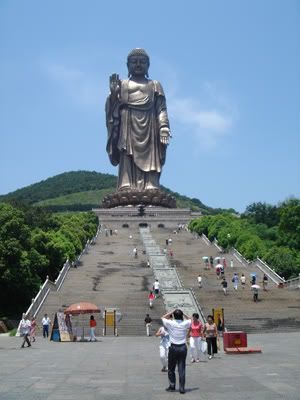
A picture from up-close.
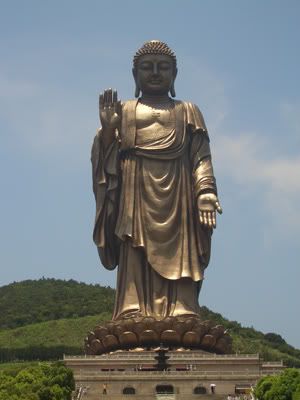
At the top of the steps, a paranomic view of the area can be seen. The Buddha's location is said to be designed according to Feng Shui specifications. A lake in front and a mountain behind, it is the best Feng Shui.
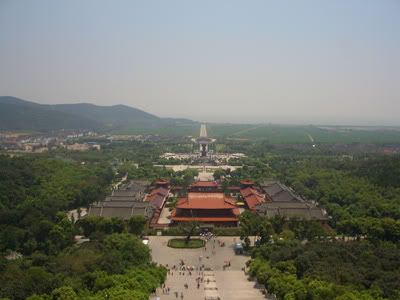
Within the building, there is the Buddhist museum which gives a very good overview of Buddhism around the world. It is really amazing on how diverse Buddhist cultures are in different country. Most people enter the building to get to the Buddha's foot and touch it for blessings (包佛脚). I also do it likewise, the direct way.
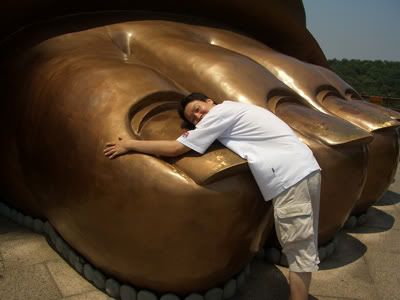
Journey to Tai Hu
We spent around 3 hours in Ling Shan before proceeding to our next stop Tai Hu. One of the tour guides approached us again and off we go to Tai Hu. It cost 105 RMB this time round (100 RMB for the entrance and 5 RMB for the bus). The main sight in Tai Hu is Xian Dao (仙岛), an island with lots of Taoist temples.
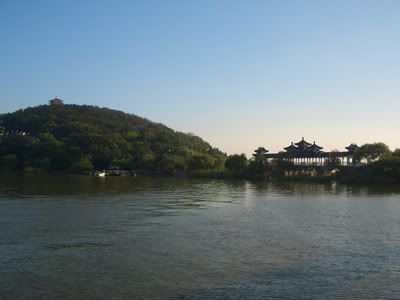
We took a ferry from a large park to the island.

At the pier, we were greeted by large yellow banners of Taoist philosophy.
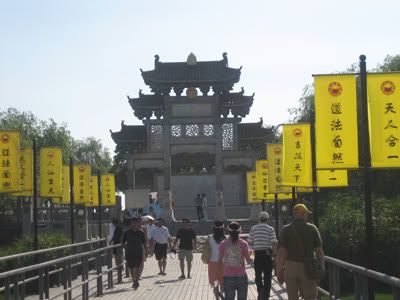
We noticed the waters around the island to be greenish in colour. It is said the average depth of the lake is just 2 metres in height. Very shallow...

Leading to the main Taoist temple is a traditional Chinese street.
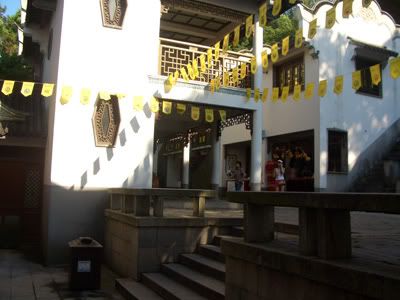
And here we have arrived at the main temple of the Heaven God.
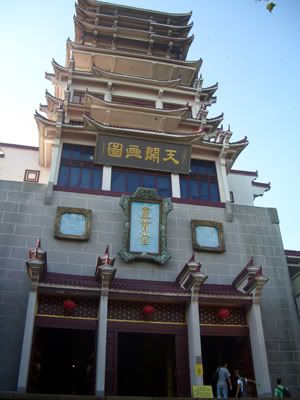
Many of the temple assistants are dressed in the traditional Taoist masters garb. You may have seen it from the movies before.
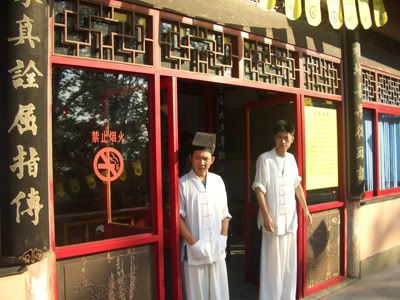
The great grandmaster of the Taoist philosophy is Lao Zi. Lao Zi also lives in the same period as the Buddha. That period is known as the Axial period where many man of great thinking emerges.

There is a temple devoted to the God of Matchmaking. At the entrance is a large lock.
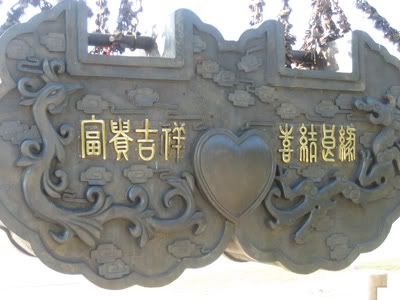
We noticed a number of married couples (in their wedding gowns) on the way here. They can actually buy love locks from the temple and hang it next to the mega locks in front. And here we have one of the locks just placed today.

We have completed our tour and were back to the Pier waiting for the ferry to arrive. This monkey family statue caught our attention and we decided to go for the Nikko’s 3 monkeys of 'speak no evil, see no evil and hear no evil'. (Entry in Tokyo 2)

And it is finally the end of the day. We caught the beautiful sunset before taking a cab back to our hotel.
